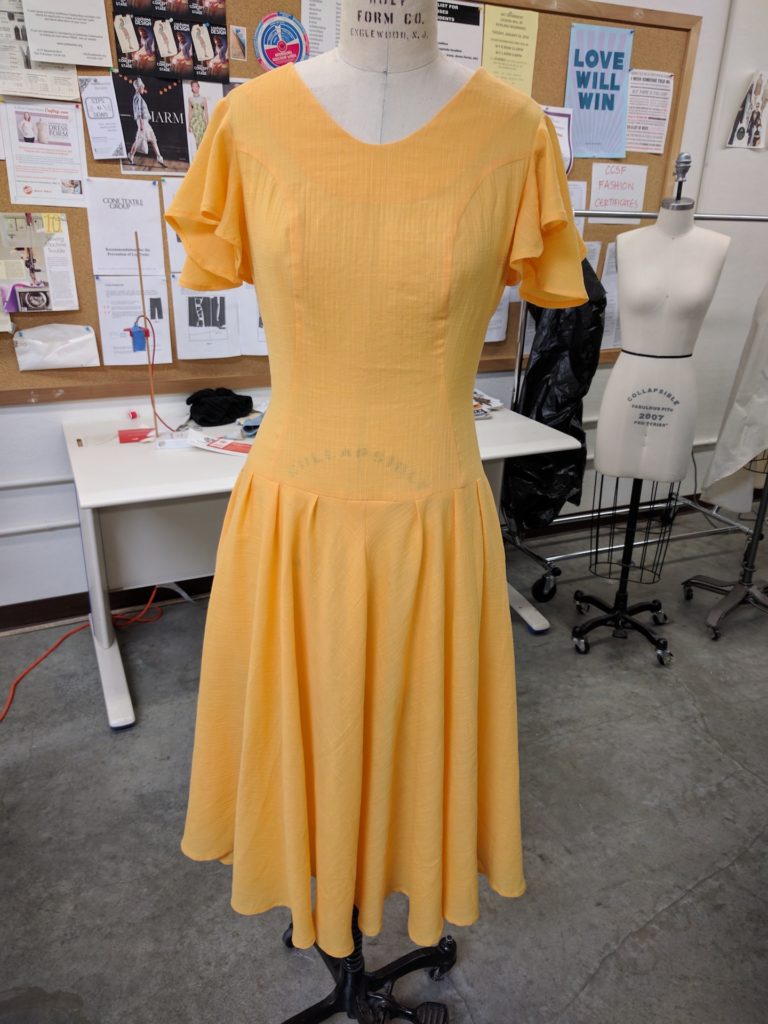Sometimes I come up with style ideas for new projects, or styling details that I’d like to follow up on later. The problem is that I have no way to record them – a textual description doesn’t capture the vision that’s in my head, and it means nothing to me weeks and months later.
Also, I look towards a potential future of creating garments for others – where it would be useful for both myself and the client to have a clear picture in our heads of what we’re working towards. So, I saw illustration skills of some sort as an important thing for me to effectively create original designs.
With those thoughts, I enrolled in the introductory class in Fashion Illustration at City College of San Francisco. The instructor is Paul Gallo, whose classes I have taken before, and is an excellent instructor. He has two classes in draping and bias design on Craftsy. I had a great deal of trepidation leading into this class – I don’t really think of myself as an artist or illustrator – but I am familiar with Paul’s teaching style and figured if anyone would make this topic comfortable, he would be it. Continue reading


